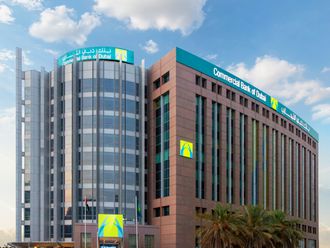New York: Activist investors are putting the US banking sector in their crosshairs, betting that headwinds whipping through the industry will accelerate consolidation among lenders.
While these activist hedge funds have already targeted some major financial companies, such as insurer American International Group Inc and auto loan lender Ally Financial Inc, banks have historically stayed out of their sights.
Activists launched 97 campaigns last year aimed at the US financial sector, around triple the amount from 2009, according to Thomson Reuters Activism data. Of those campaigns, 22 were aimed at banks, up from eight in 2009, the data show. The number has increased every year since the 2008 financial crisis.
Hedge funds such as Ancora Advisors, Clover Partners and Seidman & Associates are buying up stakes in lenders across the US, from community banks to large regional lenders.
Driving these investments is the view that ultra-low interest rates, lagging returns on equity and tough regulations will push more banks to merge, with buyers willing to pay a hefty multiple to a bank’s tangible book value. Activist investors interviewed by Reuters say another factor is exposure to energy-related loans, which is driving down the valuations of certain banks and making them all the more vulnerable to a takeover.
“Bigger banks are back in the market doing deals,” said Ralph MacDonald, a partner at law firm Jones Day, who specialises in mergers and acquisitions.
US bank mergers and acquisitions volume rose 58 per cent last year to $34.5 billion (Dh126.7 billion), according to Thomson Reuters data.
Last week alone saw two mergers. Huntington Bancshares Inc said it would acquire FirstMerit Corp for $3.4 billion in stock and cash, combining two Ohio-based lenders. And Chemical Financial Corp said it was merging with Talmer Bancorp Inc. in an all-Michigan transaction that will create a bank with $16 billion in assets.
To be sure, activists’ bets on banks are not without risk — especially if they get the timing wrong. The S&P 500 Financials index is down 14 per cent since mid-December on fears that the Federal Reserve will take longer than previously expected to raise interest rates, hurting banks’ profitability. Another worry is that oil prices drop further, making a bank’s energy loan book more of a liability than an opportunity.
A takeout by a larger rival is also never a guarantee, but that is a risk activists are willing to take.
On Monday, Hudson Executive Capital, a New York-based hedge fund, announced it had acquired a $56 million stake in Dallas-based Comerica Bank, a lender with $71 billion in assets under management.
Among the banks that could buy Comerica is North Carolina-based BB&T Bank, according to activist investors who spoke to Reuters. David White, a BB&T spokesman said the company does not comment on speculation relating to mergers or acquisitions. Comerica declined to comment.
Vulnerable to an approach
Zions Bancorporation, a Salt Lake City lender with $60 billion in assets, is another bank that activists said is vulnerable to an approach. Zions did not return calls seeking comment.
Comerica’s return on common equity is about 7 per cent while Zions is around 5 per cent. That is also lower than other peers, potentially opening up Zions to criticism that it isn’t working its balance sheet aggressively enough.
As lenders with more than $50 billion in assets, both banks are labelled systemically important financial institutions (SIFIs), meaning they are subjected to enhanced Federal Reserve supervision and the central bank’s annual stress tests. The SIFI label comes with heavier compliance cost burdens that bank executives say hit mid-sized banks harder than the largest institutions, which have the scale to better absorb the cost.
“For US depositories, if you’re trying to drive growth, how much cost can you continue to cut?,” said Daniel Kerstein, a Barclays investment banker who advises companies about activism and activist campaigns. “Ultimately, you need scale to spread out your costs.”
Loss of fun
PL Capital, an activist hedge fund focused on the bank sector, is raising a $200 million hedge fund that will target banks with up to $50 billion in assets.
The firm believes that any bank earning a 12 per cent or less return on tangible common equity needs to consider whether it can prosper as an independent institution, PL Capital co-founder Richard Lashley, said in an interview.
A bank’s exposure to falling energy prices makes it even more vulnerable, he noted. But another key factor is a bank’s ability to manoeuvre through a climate where low rates are compressing net interest margins, and stricter regulations are increasing costs.
“Management teams and boards are just exhausted,” said Lashley, who is based in New Jersey. “It’s not fun to run a bank anymore.” The rich pickings that activists see in banks contrasts with a drought for such opportunities that persisted for many years.
After the 2008 financial crisis, bank mergers ground to a halt.
Banks subsequently focused on cleaning up their own balance sheets and implementing new regulations enforced by the Fed as part of the Dodd-Frank legislative overhaul of the US financial system. Beginning around last year, bank deals perked up again, emboldening activists.
“My phones are ringing off the hook with calls coming in from banks wanting to sell,” said Pat Hickman, the CEO of Happy State Bank, a lender in the Texas panhandle. “And one of the primary reasons is regulation.” Activist investors have traditionally steered clear of large Wall Street banks, wary of their size, complexity and high level of attention they earn from regulators and politicians. Still, intervention by activist investors may not be entirely out of the question in the future.
Mike Mayo, managing director of brokerage firm CLSA and a veteran banking analyst, last week hinted that frustrated stock owners were a factor behind his decision to upgrade his rating of Bank of America’s stock.
“While an activist is an outside shot, increased shareholder pressure seems likely,” Mayo said in his January 29 note.











